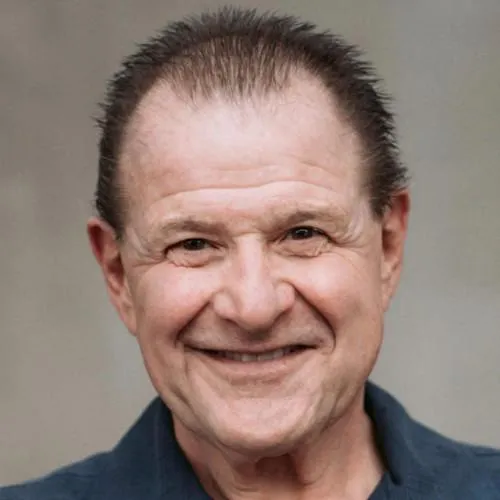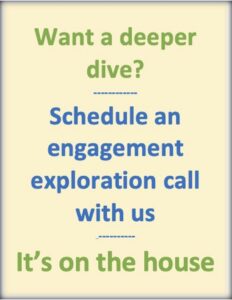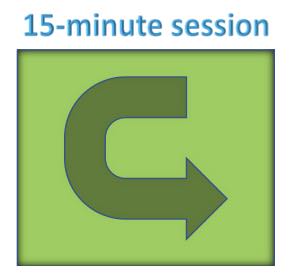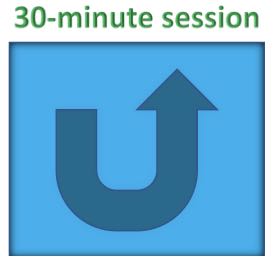The Human View™ Blog

The Golden Circle (Start with Why)
True consumerism rests on personalism
It's no secret that personalization is an increasingly important part of driving healthcare consumerism. In fact, there really can't be true healthcare consumerism unless the benefits messaging and descriptors, along with the purposes they serve and how they’ll make people's lives better, are included.
The old one-size-fits-all models have clearly hit their upper limit. Enter psychographic profiling and segmentation, kind of like a just-in-time supply chain model. With this approach, we can deliver our message in a far more tailored way. This, in turn, leads to better overall engagement in core, ancillary, voluntary benefits, well-being and point solution programs.
The golden circle
Simon Sinek talks about the Golden Circle – three concentric circles, with “why” at the center, “how” as the next ring out, and "what" as the furthest ring out. He also points out how the vast majority of organizations speak to, sell to, and emphasize the “what” and the “how,” and often don’t even get to the “why.”

In his TED Talk, “How Great Leaders Inspire Action," he contrasts Apple and Gateway, (how many of us remember Gateway?). He explains how the Gateway approach was along these lines: “We make great computers. They’re beautifully designed and simple to use. Wanna buy one?” He then notes that this is how most marketing is done, how most sales is done, and even how most of us communicate inter-personally. His observation of the market response? “Meh.”
Challenging the status quo
But with Apple, they started with “In everything we do, we believe in challenging the status quo. We believe in thinking differently. The way we challenge the status quo is by making beautifully-designed products that are simple to use. We just happen to make great computers. Wanna buy one?” He goes on, "It's totally different; and all I did is reverse the order of the information.”
Similarly, we have tended to start with our benefits “what:” “It’s time to enroll in benefits.” Then, our “how:” “You can click here to go online, you can call in to our call center, or you can even schedule a call with a counselor.” But do we ever really get to “why?” It’s kind of assumed, right? “Everybody knows they need health insurance. And if we can just do a better job of communicating what we offer, more people will enroll.” Employees’ all-too-typical collective response? “Meh.”
Starting with the employee’s why
What if we started with the “why” of our employees? If we knew how they see the world, we'd have a good sense of what’s important to them – personally – and we could thus frame why the benefit programs we offer can help them “get what they want.”
“If you like the idea of being more in charge of your benefits portfolio,” or “If you like a broader range of options to choose your own benefits path....have we got a toolkit for you! Click here for our personalized benefit selection tools.” We might even decide to include some modest incentives for enrolling early, or “bringing a colleague,” etc.
Now we’re connecting, and activating, because the “being in charge” phrase appeals to the Self Achievers, and “choosing your path” appeals to Balance Seekers. But those two segments combined only make up about 42% the typical workforce. The other 58% are just not going to be “activated” by the prospect of being in charge or choosing their own path.
Priority Jugglers want to spend the least amount of time possible on enrollment, but they also want to be sure that they're taking care of those who count on them. The Direction Takers need a good amount of hand holding, and they'll tend to go with standardized recommendations as long as they believe they're coming from an expert. The last type, Willful Endurers – like Priority Jugglers - also tend to have a short attention span. They live for today and generally don't believe in investing time and effort and money now in order to have better health tomorrow. They deal with things when they happen rather than “wasting time” planning ahead.
The “want-to” factor
So with traditional health and well-being offers, we already know that we don't really get enough people to say “yes,” and part of that is because we haven’t had a way to know what motivates them, or how they prefer to learn. Why is someone doing what they're doing, or not doing, and how can we address that? How should we reach out to them? Because we have to address the “I don't want to” factor, and we have to accomplish getting more of them to raise their hands and say "Yes, I want these programs."
So the metaphor we've always used is “transmit on the frequency they're listening for.” Another adage that describes this model very well is “it's not what you say, it's how you say it.”
With that we can personalize benefit guides, microsites, text messages, voice messages, emails and even postcards or direct mail communications to the employee’s home.
Using HSAs to promote HDHPs
To market HDHPs more effectively, we focus on why each one of these types may want an HSA, because a key challenge has always been to get past employees’ fears around the basic idea of a high deductible.
When we can speak to the benefits that each type gets, towards being in control, or having more choices, or making sure their families are taken care of, or following what experts recommend, or making it easy to handle things without even filing claims, and putting hassles behind you quickly, then we're appealing to each one of those five different types.
The last word
On the whole, the BenefitPersonas™ model achieves more enrollment into the programs that are otherwise underutilized, more ongoing engagement across the board, and higher satisfaction. All of these boons can, in turn, be used in employee recruitment, talent acquisition and retention. As we often emphasize, “We are humans first." With that orientation, and by adopting cutting edge behavioral-science models, we can confidently answer every human being’s age-old question, “What’s in it for me?”
~ Mark Head
© 2023. All Rights Reserved.
Click the green button or the blue button (below) to visit our scheduling pages.

Mark Head
President
With 4 decades of combined experience in employee benefits consulting, wellness and health management, Head brings a unique combination of dynamic perspectives into a clear vision of where the future of health care is moving - and it's moving towards deeper human connection, awareness, and engagement...
Follow Us On
© 2025 Benefit Personas, LLC. All Rights Reserved.





